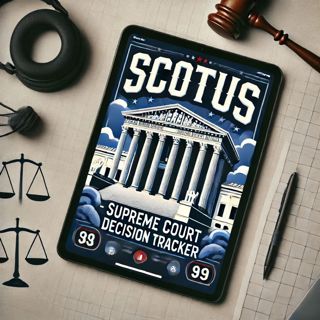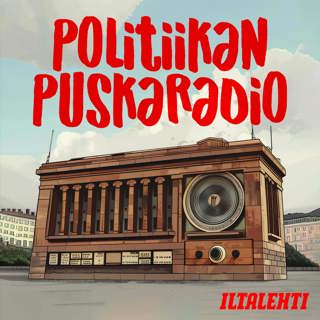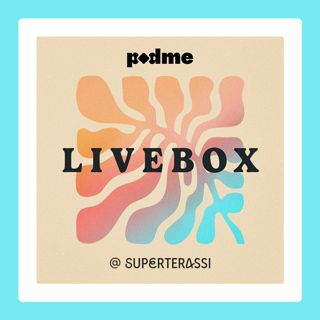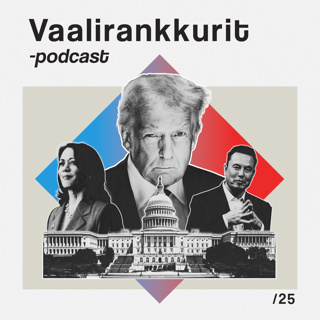
Supreme Court Rulings Reshape Executive Power and Environmental Policy
The Supreme Court has been at the center of several high-profile cases and headlines over the last few days, reflecting both its immediate impact on executive power and ongoing debates over its role in the nation’s constitutional structure. According to CNN and analysis from SCOTUSblog, the conservative majority continues to support major actions by President Trump, allowing him to move forward with executive orders that include large-scale federal workforce reductions and the dismantling of the Department of Education. In a recent 8-1 decision delivered by Justice Elena Kagan, with only Justice Ketanji Brown Jackson dissenting, the Court stayed lower court orders that blocked President Trump’s executive order for federal workforce cuts. This ruling clears the way for the administration to proceed with terminating a significant number of federal employees, a move strongly opposed by unions and several states.There has also been significant attention to the Supreme Court’s handling of Trump’s executive order restricting birthright citizenship, which has been declared unconstitutional by both district and appellate courts. The current focus is on whether the Supreme Court will provide a definitive ruling on the constitutionality of this order. The Ninth Circuit Court of Appeals recently struck down Trump’s order as contrary to the Citizenship Clause and longstanding precedent, and now all eyes are on the high court to see if it will address the substance of the issue in the upcoming term. Meanwhile, more than 300 lawsuits are challenging various Trump administration policies, many of which are expected to reach the Supreme Court soon.Tensions among the justices themselves have become more visible, with public disagreements emerging in their opinions. For instance, in cases involving the independent functioning of agencies like the Department of Education, the liberal justices have issued passionate dissents emphasizing the need for the judiciary to check what they view as executive lawlessness, while the conservative majority has focused on restricting the scope of lower court injunctions. Justice Amy Coney Barrett, writing for the conservative majority, has reinforced a narrow view of judicial oversight over the executive branch, insisting courts should not overstep the powers granted by Congress.Recent data from SCOTUSblog’s Stat Pack highlights how Justice Clarence Thomas and Justice Samuel Alito remain the most ideologically aligned justices in the current term, agreeing in 97% of all cases and in perfect unity in closely divided ones. Disagreements, when they do occur, often revolve around interpretative approaches to statutory law and the practical consequences of the Court’s interpretations.Another significant recent Supreme Court decision involves environmental policy. The Court’s “Seven Counties” decision narrowed the scope of the National Environmental Policy Act, ruling that federal agencies are only required to conduct environmental reviews within the boundaries of their regulatory authority. Industry observers note this will shift environmental litigation to the state level and could streamline—though not eliminate—litigation risks for major federal projects.Thank you for tuning in, and don’t forget to subscribe for more updates. This has been a Quiet Please production, for more check out quiet please dot ai.For more http://www.quietplease.aiGet the best deals https://amzn.to/3ODvOtaThis content was created in partnership and with the help of Artificial Intelligence AI
30 Heinä 3min

Supreme Court Rulings Reshape Executive Power and School Policies
The Supreme Court just wrapped up its term with a series of tightly contested 6-3 decisions, each bringing significant headlines and debate across the country. One of the most closely watched cases involved President Trump’s executive order to end birthright citizenship. The court did not step in on the overall constitutionality of the order, but its ruling makes it possible for Trump to start enforcing this policy while legal challenges are still moving through the lower courts. Legal experts, like Seth Chandler at the University of Houston, point out this decision fundamentally shifts how nationwide injunctions work, making it generally harder for lower courts to issue sweeping blocks on executive branch actions—potentially affecting a wide range of future presidential policies.Another significant case saw the justices siding with Maryland parents who wanted the right to opt their children out of classroom lessons involving LGBTQ-inclusive storybooks. This ruling is expected to have ripple effects for school boards nationwide, as it puts a renewed spotlight on parental rights when controversial topics appear in school curriculums. As Ilya Shapiro from the Manhattan Institute observed, school boards now have to consider these rights when dealing with diverse and potentially contentious material.In a more technical but still impactful decision, the court upheld a federal fee built into phone bills that helps subsidize communications services in rural areas. This case further weakened the so-called nondelegation doctrine, affirming Congress’s broad authority to allow federal agencies leeway in carrying out legislative intent. Legal observers comment that this ruling continues a trend of allowing regulatory agencies significant discretion in how they implement congressional policy.These decisions also revealed the ongoing ideological divisions within the court. All the recent major rulings split along predictable lines, with the six conservative-leaning justices in the majority and the three Democratic appointees in dissent. Still, there’s talk among court watchers that the dynamic is less rigid than it seems, with Chief Justice Roberts and Justices Kavanaugh and Barrett often acting as a moderate bloc—sometimes determining the ultimate outcome of particularly controversial cases, according to commentary highlighted by sources like SCOTUSblog.Meanwhile, the political implications of these rulings are also making headlines. CNN and The Hill both note that former President Trump is enjoying a string of Supreme Court wins on the emergency docket, and he’s publicly suggested that President Obama “owes him” after the recent immunity decision. Surveys mentioned in the Associated Press show a slight uptick in public confidence in the court, but underlying skepticism about its growing power remains strong.Outside those headline decisions, the court allowed the Trump administration to fire three members of the Consumer Product Safety Commission, a move that drew pointed dissent from Justice Elena Kagan. At the same time, lower federal courts continue to grapple with fallout from other executive actions, including new blocks on attempts to end birthright citizenship and moves to cut off arts funding, as reported by AP News and Politico.As the Supreme Court heads into recess, legal analysts and journalists stress the lasting policy and political reverberations of these late-term rulings. The court remains at the center of America’s biggest battles over rights, regulation, and the limits of executive power. Thanks for tuning in and don’t forget to subscribe for more updates. This has been a quiet please production, for more check out quiet please dot ai.For more http://www.quietplease.aiGet the best deals https://amzn.to/3ODvOtaThis content was created in partnership and with the help of Artificial Intelligence AI
28 Heinä 3min

Supreme Court's Growing Influence: Reshaping US Policy Through Emergency Rulings
In recent days, the US Supreme Court has played a major role in shaping national policy by issuing several high-stakes decisions and taking emergency actions that have significantly advanced President Trump’s second-term agenda. According to The Hill, Trump’s administration has dramatically increased its use of emergency applications to the Supreme Court, filing more in the past six months than the previous administration did during its entire four-year term. These emergency appeals, often decided quickly and with little explanation, have paved the way for sweeping policy changes without the lengthy process of traditional litigation.One of the most prominent headlines centers on birthright citizenship. The Supreme Court recently limited the use of nationwide injunctions, which some legal experts believed might allow the president’s controversial executive order ending birthright citizenship to take effect as early as this weekend. However, CNN reports that a series of lower court rulings have continued to block the administration’s attempts, with federal judges issuing injunctions and deeming the order unconstitutional. Despite the Supreme Court’s recent restrictions on broad injunctions, judges have justified their continued use by arguing that only such measures offer full relief to affected states and individuals.Beyond the birthright citizenship issue, the Supreme Court has allowed Trump to implement other contested policies. According to reporting from The Hill, the justices cleared the way for the administration to strip temporary protections from hundreds of thousands of migrants, expedite deportations, freeze $65 million in teacher grants, and expand access to Social Security data for certain federal personnel. In one particularly notable emergency decision, the court allowed Trump to remove three Democratic commissioners from the US Consumer Product Safety Commission, signaling a broader willingness to reconsider long-standing legal precedents like the Humphrey’s Executor case, which has historically restricted the president’s power to fire officials at independent federal agencies. The National Law Review explains that by granting Trump’s application for a stay, the conservative majority signaled it may eventually overturn Humphrey’s Executor, potentially giving the White House far greater control over these agencies.Meanwhile, the court remains divided along ideological lines, with conservative justices defending the fast-paced, sometimes opaque emergency decision-making. Justice Elena Kagan and Justice Ketanji Brown Jackson have publicly criticized the growing reliance on what some call the “shadow docket,” expressing concerns over the lack of transparency and potential risks to the rule of law.In another significant decision, News 9 reports that the Supreme Court unanimously upheld a law enabling Americans victimized by international terrorism to sue perpetrators in federal courts. This ruling specifically concerned lawsuits brought by US victims of terrorist attacks in Israel against the Palestinian Authority and Palestine Liberation Organization, finding that the law properly allows such cases to move forward.Finally, actions by the Supreme Court have allowed the Trump administration to proceed with efforts to restructure and reduce the role of the Department of Education by lifting an injunction on proposed changes, as reported by AOL.Listeners can see that the Supreme Court is playing an increasingly immediate and controversial part in shaping federal policy, with emergency decisions and ideological debates driving national headlines. Thanks for tuning in, and don’t forget to subscribe. This has been a quiet please production, for more check out quiet please dot ai.For more http://www.quietplease.aiGet the best deals https://amzn.to/3ODvOtaThis content was created in partnership and with the help of Artificial Intelligence AI
27 Heinä 3min

Supreme Court Rulings: Voting Rights, Criminal Justice, and Upcoming Term Highlights
The latest news from the US Supreme Court includes a mix of significant rulings, ongoing legal disputes, and upcoming matters likely to shape the coming term. One of the biggest headlines has been a major development in voting rights. According to the Campaign Legal Center, the Supreme Court has temporarily paused a ruling from the Eighth Circuit Court of Appeals that would have effectively blocked private citizens and groups from suing to enforce Section 2 of the Voting Rights Act in seven states, including North Dakota, Arkansas, and Missouri. This pause leaves in place fair state legislative maps for Native American voters in North Dakota, while the Supreme Court considers whether to reverse the lower court’s decision and let individuals once again bring these critical voting rights challenges.On the criminal justice front, the State of Florida’s scheduled execution of Edward James Zakrzewski II for July 31 remains active, as the Supreme Court has not intervened after the Florida Supreme Court denied relief. Death penalty cases continue to draw significant public attention each time they come before the Court.Looking at broader trends, SCOTUSblog reports that the Court recently ruled allowing the Trump administration to remove three members of the Consumer Product Safety Commission, a decision that could have important implications for the boundaries of presidential power over independent agencies. In her public remarks this week, Justice Elena Kagan criticized recent pro-Trump rulings from the Court’s emergency docket, highlighting concerns about the majority bypassing full explanation and transparency in high-profile, time-sensitive orders. ABC News highlighted these comments, reinforcing ongoing debates about the Court’s decision-making processes and the perception of partisan influence.Bloomberg reported that while the Trump administration succeeded in winning a Supreme Court order earlier this month that permitted layoffs at the Department of Education, implementation of several other aspects of the administration’s agenda remains tied up in lower courts, signaling a period of ongoing legal contention even after marquee Supreme Court wins.Meanwhile, the new Supreme Court term is set to include cases with potentially wide-reaching consequences. For instance, SCOTUSblog noted that the justices have agreed to hear a case originating from Louisiana, where a Muslim prisoner’s religious liberty was violated when prison officials forcibly shaved his head— a dispute that will test the limits of religious protections for prisoners.Finally, the Court’s role in environmental and land management disputes remains salient, as highlighted by the ongoing public lands lawsuit between the state of Utah and federal government. While the Supreme Court rejected Utah’s initial direct filing attempting to force federal land sales earlier this year, state officials intend to revive their efforts in lower federal courts.Thanks for tuning in, and don’t forget to subscribe. This has been a Quiet Please production, for more check out quiet please dot ai.For more http://www.quietplease.aiGet the best deals https://amzn.to/3ODvOtaThis content was created in partnership and with the help of Artificial Intelligence AI
25 Heinä 3min

Supreme Court Shakes Up Legal Landscape: Key Rulings and Emerging Trends
Listeners, here’s the very latest on the US Supreme Court. The justices have just wrapped up a highly watched term, delivering important rulings and setting the stage for continued debate on key social and political issues. One of the most significant developments is ongoing fallout from the Court’s recent term, which was marked by major opinions on religious liberty, immigration, and abortion. News outlets and legal analysts have noted that several high-profile religious freedom cases and questions about the government’s authority have shaped the legal landscape, and more disputes in this area are likely to reach the Court soon, according to Arkansas Catholic and other legal news sources.A critical headline in recent days involves the Supreme Court allowing the Department of Education to resume massive layoffs. As explained by NARFE and echoed by opinion columnists in the Los Angeles Times, the Court, with little explanation, lifted an injunction that had protected nearly 1,400 Education Department employees from termination as part of the Trump administration's workforce reduction efforts. Justice Sonia Sotomayor sharply criticized this action in her dissent, arguing that the move enables the executive branch to bypass Congress by effectively dissolving the agency through mass firings. The practical result is that the agency—once over 4,000 strong—could now see its workforce cut by more than half, potentially disrupting vital services like student financial aid and civil rights enforcement.Another closely watched legal battle concerns the Supreme Court’s stance on nationwide, or "universal," injunctions. Lawfare reports that just a few weeks ago, in Trump v. CASA, the justices sharply limited the ability of lower courts to issue injunctions that apply nationwide. Instead, the Court held that federal courts generally can grant relief only to the parties before them, not to everyone potentially affected by the law being challenged. This decision is altering how challenges to federal policies—especially controversial executive actions—will be litigated going forward. Legal analysts are closely watching to see if more states begin filing lawsuits directly in the Supreme Court to obtain broad relief on pressing constitutional questions.On the tech front, NetChoice, a prominent industry group representing companies like Google and Meta, just petitioned Justice Alito to block a new Mississippi law that requires social networks to verify the ages of all users and shield minors from harmful material, including content promoting eating disorders and substance abuse. NetChoice is arguing that the law, similar to a California statute struck down in 2011, violates the First Amendment. The initial injunction blocked the law for now, and all eyes are on how quickly the Supreme Court will act and what it signals for similar social media regulations facing challenges in other states.Behind the scenes, legal commentators like those in the Los Angeles Times have criticized the Supreme Court’s increasing reliance on the so-called "shadow docket"—making significant, often far-reaching decisions without providing opinions or detailed explanations. For example, in immigration, the justices allowed deportations of Venezuelan and Cuban nationals to proceed despite lower court concerns about lack of due process and the risk of harm, again issuing their order without explanation. Justice Sotomayor has again been vocal in dissent, warning of the human costs and the need for transparency.Redistricting fights continue to land before the justices as well. Recently filed materials point to continued wrangling over the interpretation of the Voting Rights Act and the drawing of electoral maps, with some states seeking emergency intervention by the Court while ongoing appeals continue in the lower courts.There are no blockbuster new merits opinions given the term’s conclusion, but high-stakes emergency cases, major dissents, and signs of shifting doctrine have kept the Court in the headlines. As always, the next round of high-profile cases will be closely watched when arguments resume in the fall.Thanks for tuning in—if you want more updates on SCOTUS and legal news, don’t forget to subscribe. This has been a quiet please production, for more check out quiet please dot ai.For more http://www.quietplease.aiGet the best deals https://amzn.to/3ODvOtaThis content was created in partnership and with the help of Artificial Intelligence AI
23 Heinä 4min

"Supreme Court Controversy: Landmark Decisions and Divisive Debates"
The Supreme Court has been making headlines with several controversial and consequential decisions that have sparked intense debate among the justices and the public. In a significant move, the Court recently allowed the Trump Administration to proceed with plans to dramatically reduce the federal workforce and restructure the Department of Education, a key pillar of Trump's broader effort—often referred to as Project 2025—to reshape federal agencies through executive action. The Court declined to provide any written explanation for its summary decision, drawing a scathing 19-page dissent from Justice Sonia Sotomayor, who was joined by the Court’s two other liberal justices. Sotomayor sharply criticized the majority’s willingness to give the executive branch wide latitude, warning that the Judiciary should check alleged lawlessness, not expedite it, and arguing that the decision hands the Executive the power to repeal statutes by firing those responsible for implementing them.This ruling is just one example from a term marked by deep divisions. During the most recent term, the Court was split in the majority of cases, with only about 42% of Opinions of the Court being unanimous. The dissents have been particularly fiery, especially from the trio of Democratic appointees. Justice Ketanji Brown Jackson issued a notable solo dissent this term, accusing the majority of furthering “an existential threat to the rule of law.” Justices Barrett and Sotomayor openly traded barbs in their opinions, with Sotomayor’s dissents standing out for their direct language, accusing the Court of launching an attack on the legal system, favoring the government’s gamesmanship, and providing what she described as an open invitation for the executive branch to sidestep constitutional limits. She expressed grave concern over the majority’s willingness to allow policies she argues could cause real harm, especially in cases involving families and the rights of vulnerable individuals.In another recent 6-3 decision, the Supreme Court supported parents seeking a preliminary injunction against a school board, highlighting ongoing legal debates over education policy and constitutional rights. The decision, handed down in late June, continues to fuel uncertainty for school districts across the country as they await more detailed guidance from the Court.Outside of decisions, the Supreme Court is also peripherally involved in other high-profile legal battles, including those related to the unsealing of grand jury transcripts in the prosecution of Jeffrey Epstein and Ghislaine Maxwell. However, legal analysts indicate that the Supreme Court may not take direct action soon because appeals are still pending, and the privacy of victims remains a major concern.Listeners should also note that the broader legal landscape is buzzing, with former President Donald Trump filing a $10 billion defamation suit against Dow Jones and the Wall Street Journal, reflecting ongoing tensions between the presidency, the judiciary, and the media. Meanwhile, lower court decisions relevant to the Supreme Court's work continue to make waves, such as a federal court tossing Trump’s copyright lawsuit against Bob Woodward and active federal bench nominations moving through the Senate.Thanks for tuning in, and if you want to keep up with more legal news and landmark decisions, don’t forget to subscribe. This has been a Quiet Please production, for more check out quiet please dot ai.For more http://www.quietplease.aiGet the best deals https://amzn.to/3ODvOtaThis content was created in partnership and with the help of Artificial Intelligence AI
21 Heinä 3min

Supreme Court Rulings Reshape Telecom, Agency Powers, and Federal Workforce
The U.S. Supreme Court has closed out its term with a wave of impactful decisions and headline-grabbing actions, touching on everything from telecom policy and the future of federal agencies to high-level personnel moves and the balance of executive power. Perhaps the most immediate development is the Court's recent decision to uphold the federal Universal Service Fund, a longstanding program that collects fees from phone providers to subsidize internet and phone access in underserved and rural areas nationwide. This 6-3 ruling holds particular importance for rural communities that rely on telehealth and educational connectivity. Justice Elena Kagan, writing for the majority, rejected claims that the program’s funding mechanism amounts to an unconstitutional tax, siding with the FCC’s authority to administer the fund. The conservative dissent underscored ongoing debates about Congressional authority and federal agency power.On the administrative front, listeners should be aware of a broader trend: the Supreme Court has been steadily dismantling the longstanding practice of deferring to federal agency expertise. Since last summer, with decisions like Loper Bright Enterprises v. Raimondo and others, judges rather than scientific agencies now play a larger role in interpreting the law, which significantly impacts how regulations in public health, the environment, and technology will move forward. Agencies are already facing a sharp increase in legal challenges to their guidance and rules, and experts predict a chilling effect, as new regulations are likely to be challenged more frequently.More specifically on environmental policy, the Court unanimously determined in Seven County Infrastructure Coalition v. Eagle County that the National Environmental Policy Act now requires agencies to limit the scope of their environmental impact assessments to issues over which they have direct regulatory authority. This shift means less emphasis on how projects interact with the broader ecosystem, offering an easier path for large infrastructure developments but raising concerns among scientists about the disregard for systemic ecological consequences.In labor and education news, the Supreme Court allowed the Trump administration to proceed with layoffs of more than 1,300 Education Department employees, although the case itself is still under challenge and the ultimate legality of the layoffs will be determined later. These workers were handling protections for students and teachers against discrimination, supporting college financial aid offices, and keeping essential statistics. The ongoing debate is emblematic of the larger question about the president's power to reorganize or dismantle key pieces of the federal workforce.Another noteworthy, if quieter, procedural shift came with the Court's move to limit the use of “universal injunctions” by district courts. These broad orders, which could previously halt federal actions nationwide based on a single judge’s ruling, are now restricted, impacting how quickly and expansively federal policies can be challenged and paused in the courts.Behind the scenes and in legal analysis, commentators are sounding alarms about the Supreme Court’s increasing use of the “shadow docket”—decisions issued without full briefing or public argument, sometimes with only brief or unsigned orders. Critics argue that this undermines transparency and the traditional rule of law, especially as such rulings grow in frequency and importance.Finally, the Court’s evolving doctrine on the president’s removal powers over executive agency heads is making headlines. In recent decisions, the justices signaled more willingness to allow the president to unilaterally dismiss agency chiefs, narrowing longstanding protections for agencies’ independence and raising questions about future White House influence over federal oversight bodies. These developments could have wide-ranging impacts on agencies that protect labor rights, oversee fair hiring, and manage other significant public interests. Many observers see the Court’s current direction as aligning closely with conservative priorities aimed at reducing the capacity and autonomy of the administrative state.Thanks for tuning in—be sure to subscribe for more crucial updates. This has been a Quiet Please production, for more check out quietplease dot ai.For more http://www.quietplease.aiGet the best deals https://amzn.to/3ODvOtaThis content was created in partnership and with the help of Artificial Intelligence AI
20 Heinä 4min

Supreme Court Upholds Trump's Education Department Downsizing, Raising Concerns Over Student Protections
Listeners, in a sweeping development earlier this week, the U.S. Supreme Court made headlines by lifting an injunction that had blocked President Trump’s push to dramatically downsize the Department of Education. This decision, made without explanation from the conservative majority, allows the administration to move forward with mass layoffs that have already cut nearly half of the agency’s workforce and to begin shifting oversight of federal student loans and other core functions to states. Education Secretary Linda McMahon praised this move as a victory for executive authority, whereas dissenting Justice Sonia Sotomayor warned it could harm millions of students and jeopardize civil rights protections. National Parents Union president Keri Rodrigues sharply criticized the Court, calling the ruling an unlawful power grab and a risk to students nationwide. Legal challenges over the fate of the Education Department are still being fought in lower courts, but for now, the Trump administration’s overhaul can continue.The Supreme Court’s recent activity has generally favored President Trump’s efforts to expand executive power. The justices, acting largely on their "shadow docket"—the emergency channel for fast, often unexplained orders—have permitted not only the Education Department downsizing, but also recent high-profile decisions including the deportation of certain immigrants and controversial changes affecting transgender military service.These orders continue a pattern from the just-concluded term, which saw a flurry of consequential rulings on the power of federal judges, states’ authority over education and healthcare, and nationwide injunctions. Most notably, the Court restricted federal judges’ ability to issue nationwide injunctions, a decision seen as a major victory for Trump’s executive initiatives. Justice Amy Coney Barrett wrote for the majority, emphasizing that federal courts are not meant to oversee the entire executive branch but rather resolve specific constitutional disputes as authorized by Congress. Legal commentators, such as Erwin Chemerinsky from UC Berkeley, warn this could diminish judicial oversight over executive overreach.The justices also issued major decisions on key social issues. In the closely watched United States v. Skrmetti, the Court upheld Tennessee’s law banning gender-affirming care for minors, stating that such regulations are an area where states hold broad legislative authority due to ongoing medical debates. Another ruling determined that majority group members alleging workplace discrimination are held to the same legal standards as minority plaintiffs, marking a notable shift in employment discrimination law.Education again took center stage in Supreme Court deliberations, with the justices deadlocked 4-4 in a case about religious charter schools in Oklahoma, leaving a lower court ruling in place that blocks the establishment of religious public schools. Experts from the Brookings Institution note that, although the Court didn’t break new ground in that decision due to Justice Amy Coney Barrett recusing herself, recent opinions suggest a growing willingness by the majority to elevate religious liberty claims, potentially foreshadowing further shifts in how church-state issues intersect with public education.As the Court prepares for its next term, listeners can expect more cases on religious liberty, campaign finance, and digital copyright, indicating that the justices are poised to significantly influence federal-state relations and individual rights in the months ahead.Thanks for tuning in, and don’t forget to subscribe. This has been a quiet please production, for more check out quiet please dot ai.For more http://www.quietplease.aiGet the best deals https://amzn.to/3ODvOtaThis content was created in partnership and with the help of Artificial Intelligence AI
16 Heinä 3min





















